Forearms are probably the last thing most guys worry about when it comes to building their physique. It's like trying to add a body kit to a station wagon: too much, too soon. But truth be told, you were working your forearms long before you even thought about "forearm training." Before you could even walk, you probably tried to yank the lid off your baby bottle. Yep, you were training forearms.
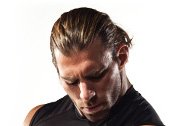
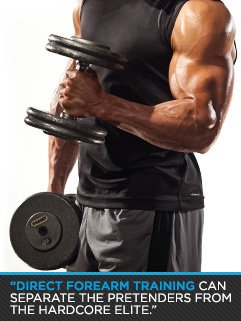
Any time you grip something, your forearms are called into action. They're working all the time, in and out of the gym. However, direct forearm training can separate the pretenders from the hardcore elite. Shake someone's hand, and if their forearm pops, you know they mean business. Roll up long sleeves to your elbows, and bam, there they are. They're both highly functional and highly aesthetic.
Check out Major League baseball players as they stride to home plate. One of the first things you notice is their big forearms, flicking the bat around like it's a toothpick. How did they build forearms almost as big as that bat? Through years of pronation, supination, extension, and flexion exercises. How can we do that in the gym? We first have to break down these terms above with a simple diagram:
Now that we have a better handle (no pun) on these terms, we need to incorporate each into a workout to effectively build muscle. Forearm training should start after you've completed any exercise that requires your grip strength, and if you perform these excruciating exercises correctly, your forearms will be so spent that a small child could outmuscle you on a handshake.
I attack forearm training by adding it to the end of that particular day's major muscle group. Many people like to include forearm training on arms day, but good sense tells me that by the time I finish arms, my forearms are more hammered than Lindsay Lohan on St. Patrick's Day. I prefer finishing shoulder or leg day with direct forearm training.
Perform the following exercises rapid-fire, moving quickly from one to the next. Repeat for a total of three sets. I won't give specific rep ranges here because fatigue will come faster as you go. Perform each exercise to total or near failure.
(Note: If you use the wrist roller, skip the palms-down wrist curls. The two exercises are nearly identical.)
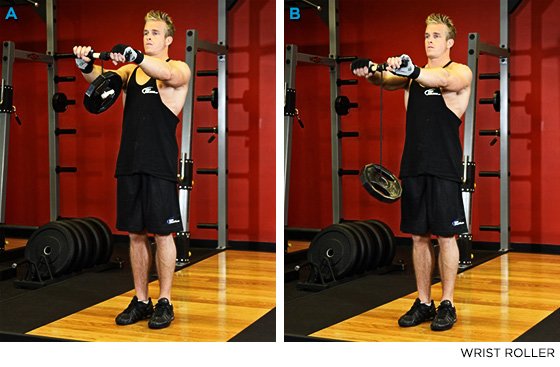
Start with the weight at the bottom and roll up the rope slack using a turning grip motion, one hand after the other, repeating all the way up until the weights hit pipe. Then, return the weight back down by rotating your wrists in the opposite direction. Up and down equals one rep. Disclaimer: This will burn. Oh, will this burn!
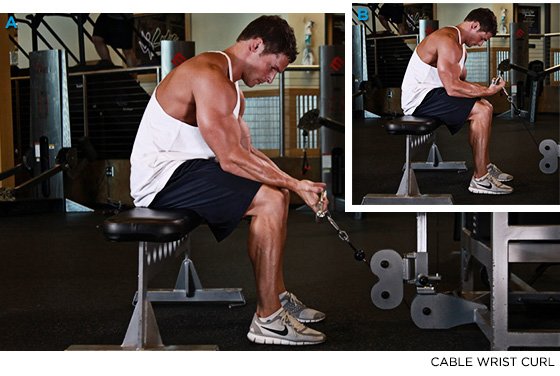
Pick up a straight-bar attachment from a cable station hold it at the end with one hand. Lock that side's elbow at your side so that the two halves of your arms form a 90-degree angle. Keep that elbow locked and your wrist in a neutral position; turn your wrist up and then turn it back down, going past neutral so that your palm faces down. Once you reach failure, switch hands and do the same number of reps.
If you don't have access to a straight bar, a dumbbell will work, too.
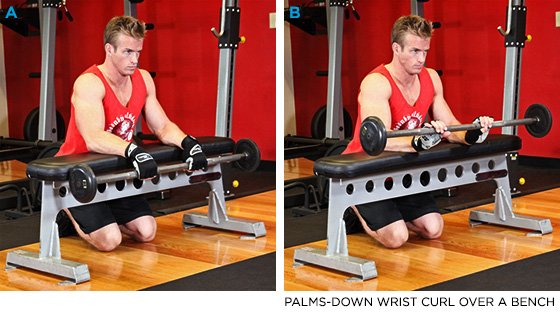
I like to perform wrist curls with a straight bar while resting my forearms on a preacher pad. This fixed position will keep me from cheating. Hold the straight bar in front of you with your hands over the top about 8 inches apart, thumbs wrapped underneath. Move your wrists up and down, as far you can go, until the bar is ready to fall out of your hands because your forearms burn so freakin' much. That's one set.
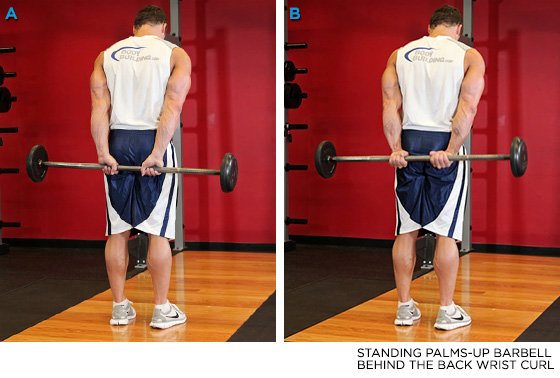
Stand holding a barbell at arms' length behind you, arms hanging from shoulder width, palms facing back. Rolls your wrists up as far as you can-and the range of motion will be pretty short. At the end of each wrist curl, return your wrists to a relaxed position without letting go of the weight. Shoot for 10-15 reps or failure, whichever comes first.

